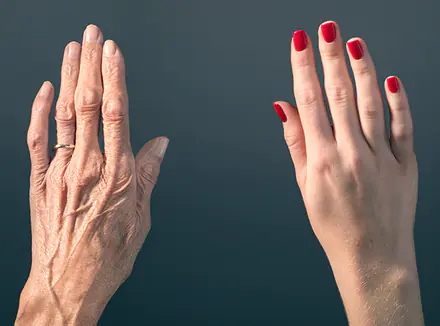
“Don’t hide a single one of my wrinkles,” the great Anna Magnani once told her photographers. “Each one of them cost me too much.” “Indeed, without exaggeration, wrinkles can be called a living mirror of human life. The memory of our emotions and mental states, character traits and experiences, lifestyle and, of course, age - they reflect everything. “The face provides invaluable information about a person,” says Jean-Pierre Veyrat. “If the lines, shapes and sizes of his body speak about who a person was originally, then his face, with all the traces that life left on it, testifies to what and, most importantly, how he happened to experience.”
Age wrinkles: traces of passing time
The fact is not very happy, but it is useless to argue with it: over the years, wrinkles still appear on our face. Each of us experiences this process differently. Although, as shown by a study conducted by Ceries (Research Center for the Study of the Epidermis and Sensitivity of Healthy Skin, founded in 1991 by CHANEL), there is a certain pattern in the sequence and timing of the appearance of wrinkles. An experiment involving several hundred women scientifically proved what we know very well: it is enough to look even at a complete stranger to more or less accurately determine his age.
What emotions does such a face have?
Joy and sadness, resentment and anger - each of our emotions is reflected on the face. 22 muscles are responsible for his facial expressions. Those that work more often form certain facial wrinkles, which create a unique “map” of our emotional life.
- Constant concern: long transverse wrinkles on the forehead.
- Cheerfulness, empathy: nice wrinkles in the corners of the eyes (“crow’s feet”) and lips.
- Stress, anxiety, tension: deep vertical furrows between the eyebrows.
- Dissatisfaction, bitterness, disappointment: “sorrowful” nasolabial folds.
Witnesses and false witnesses of age
However, wrinkles should be perceived only as a sketch, and not a clear diagram that allows you to judge a person’s real age. In the Ceries study, less than half of the women tested (44% to be exact) matched their age with their wrinkles; about a quarter (24%) looked older than their years, and 28%, on the contrary, looked much younger.
The fact is that the pattern created on the face by wrinkles contains very diverse information about a person and speaks not only about his biological age. Many things matter: the individual characteristics of the body, the innate ability of the skin to regenerate or its predisposition to earlier or later aging.
But in general, to a huge extent, the features of our appearance are formed under the influence of acquired habits, nutrition, and the environment. Everyone knows about the dangers of smoking: nicotine causes dehydration and oxygen starvation of the skin, interferes with normal collagen production, and leads to premature aging. Ultraviolet radiation also contributes to the appearance of early wrinkles. Remember the faces of your friends who are obsessed with a passion for tanning. They are very attractive... from a distance. As you get closer, you will probably see many small and large wrinkles on the forehead, cheeks and upper lip.
“Look at the world with interest, but without illusions”
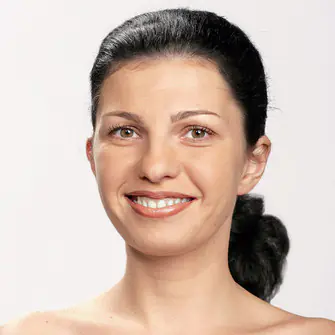
Jean-Pierre Veyrat: “There are few wrinkles on this woman’s face, but his decisive and slightly heavy features indicate a phlegmatic and not very sociable character. Judging by the expression on her face, she looks at the world with interest, but without any particular illusions. The nasolabial folds that connect to the corners of the mouth indicate her age - she is about 35 years old.”
Ekaterina, 32 years old, secretary: “I was surprised to learn that I am a phlegmatic person. Perhaps I have yet to get to know myself - even at my age it’s not too late. The world is still of some interest to me, and I have left some illusions for myself - I am a woman. And the expert was completely wrong about communication skills: I like to communicate, I love and know how to do it.”
The art of retouching
Is it possible to slow down the onset of wrinkles and stay in the category of people who look “10 years younger than their age”? Of course, if you care for your skin using methods and products specially designed for this.
Before deciding on radical procedures (injections to fill wrinkles, laser skin resurfacing, deep chemical peeling, plastic surgery...), it is worth testing the capabilities of daily care products. Cosmetology is developing and constantly updating the arsenal of these products, including more and more effective and active active ingredients: AHA (alpha hydroxy acids), retinol (vitamin A), plant extracts and synthetic components that stimulate the production of collagen by skin cells, peptides (proteins that serve as building blocks) material for cells). Today, scientists have made great progress in studying the nature of wrinkles and have learned to recognize and restore weakened skin cells.
"Expression, will and maturity"
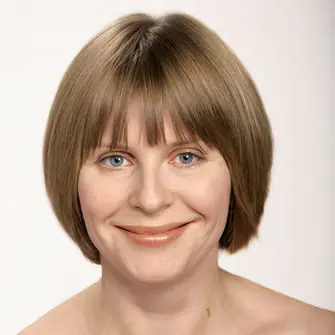
Jean-Pierre Veyrat: “It’s not easy to determine age from such a lively and moving face. But his features indicate maturity. If you ignore the facial expressions of the mouth, which is a little confusing, and take into account the nasolabial folds and clearly defined crow's feet around the eyes, I would give this woman 32-33 years old. She is an extrovert and gives the impression of a very expressive, strong-willed and active person, perhaps a little harsh in her communication. Most likely she is married."
Evgeniya, 36 years old, designer: “Mostly it’s very similar to me. But I don't consider myself harsh. Although, I probably can be like this if I’m brought to the “boiling point.” I remember now that I heard from friends how surprised they were when they saw me at such moments. I don’t consider myself strong-willed; rather, I would like to be like that. Probably, the result of my efforts appeared on my face along with the nasolabial folds. As a child, I was timid and shy. But with age this passed: life forced me to change.”
Expression wrinkles: a reflection of our emotions
There is a set of basic human emotions (surprise, fear, anger, joy, disgust, sadness.), which correspond to facial expressions that are universal for all people. But there are also expressions that are characteristic of each individual person. Constant, habitual contractions of the same muscles lead to the appearance of folds on the skin, which gradually deepen, turning into facial wrinkles. Naturally, the pattern of these wrinkles will vary from person to person. Looking at it, we can guess about a person’s temperament, the strength of his optimism, the degree of self-confidence, responsiveness, etc. Although it is, of course, impossible to create a full-fledged psychological portrait of a person in this way. As the French anthropologist and sociologist David Le Breton argued, “the face only whispers, and does not speak out loud, it only hints at individual personality traits, but does not give a clear description of the person.”
How accurately do they reflect your age?
- The first wrinkles on the forehead. You are between 18 and 24 years old: your whole life is ahead of you, but something is already bothering you...
- Barely noticeable folds between the eyebrows. From 25 to 29 years old: you are actively building your life - personal and professional. Everyone says this is a wonderful age. although you yourself sometimes doubt it.
- The first wrinkles under the eyes, emerging nasolabial folds. From 30 to 34 years old: you continue to search for yourself, revealing yourself as a person.
- Crow's feet at the outer corners of the eyes. From 35 to 39 years old: Your responsibilities increase, but you feel more confident in life than ever.
- Folds between the eyebrows, wrinkles on the forehead. From 40 to 44 years old: the beginning of maturity - you can be proud of what you have already realized!
- Fan-shaped wrinkles above the upper lip. From 45 to 49 years old: you are bravely going through this difficult stage of life, because you have a lot of important things to do.
- Wrinkles in the neck area. From 55 to 59 years old: you are still feeling good and capable of great things!
Truthful masks
They say that after 40 a person becomes responsible for his face. Beyond this point, the so-called “emotional mask” appears more and more clearly in our features, reflecting our inner life. Jean-Pierre Veyrat is convinced: “Experiences are clearly imprinted on the face. But this mask speaks not only about how we react to events. Both a person’s upbringing and his social environment are important.
The main emotional masks are easy to recognize: calmness (lack of tension; relaxed, as if facial features stretched to the sides); bitterness (the corners of the lips are sadly lowered down); tragedy (a face distorted in the literal sense of the word); impassivity (frozen features in which emotions cannot be read).” But even this last mask can serve as a source of information: “after all, it usually belongs to people who, from childhood, have been accustomed to hide their weaknesses and pain and who strive at all costs to “be strong” in any circumstances.”
"Deep feelings and love of life"
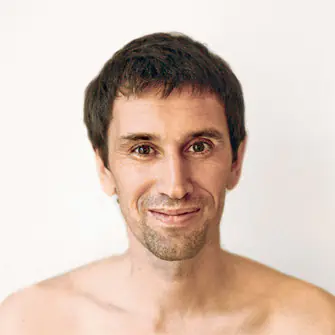
Jean-Pierre Veyrat: “This man looks very young, but emotions have already left visible imprints on his face: crow’s feet in the corners of his eyes, wrinkles on his forehead. This is the face of a deeply feeling, life-loving person, who can be considered about forty years old. He reacts energetically and very emotionally to life situations that he encounters.”
Oleg, 40 years old, photographer: “They usually tell me that I don’t look my age. But it turns out that I already look... My profession is such that I have to go to hot spots and find myself in extreme situations. I learned to hide my emotions. But sometimes they break through. I react especially violently to injustice when someone’s rights are violated.”
Zen face
Is it possible to avoid expression lines? It’s unlikely: we cannot live without emotions. But their traces can be softened. A state of inner peace, a light smoothing massage plus modern skin care products - all this will help smooth out facial wrinkles without the risk of losing your own, individual facial expression.
“Activity, sociability. and life is not always easy"
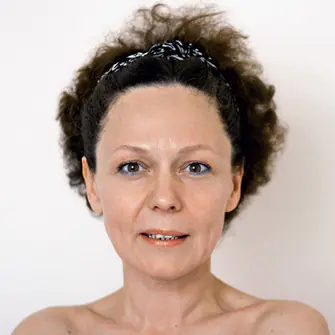
Jean-Pierre Veyrat: “Tension and some anxiety are clearly visible on this woman’s face. We can say with confidence that she is very active and sociable, and enjoys communicating with people. Her life was not always easy. Tension in the gaze, compressed lips indicate a rather restrained nature. I think she's divorced. She is approximately 50-55 years old.”
Laura, 50 years old, kindergarten teacher: “Everything is absolutely true. My life was not at all cloudless. During the shooting, I was a little worried, but that’s my nature: I worry about anything, in particular about the way I look. I'm not sure about restraint. But maybe it’s about holding back emotions when it’s inconvenient to react too violently?”
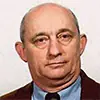
About the expert
Jean-Pierre Veyrat - consultant to the French National Gendarmerie on profiling (verbal and visual psychodiagnostics), author of the original Analyze morphogestuelle technique, used, in particular, by Lancôme to create an anti-aging product.

10 Reasons Why Men Stay in Unhappy Relationships
When the relationship has exhausted itself, you need to leave. But we don’t always follow this rule and easily come up with reasons to stay.

Five healthy sweets
If you think that proper nutrition and diet are incompatible with sweets, then we have great news - you can make them friends! We tell you what healthy goodies should be included in your usual diet.
Hello, dear ladies! We’re already talking about wrinkles, we’ve said so much, but what are wrinkles? Where do they come from and what do they mean? Our prosperity or, on the contrary, failures? Have you ever asked yourself such questions? But I need to know everything. You have to stick your (long-suffering) nose everywhere...
Philosophers say this - life lines on the face. And it’s true: events that are important to us and leave a strong impression slightly change our character, and with it our facial expression, sometimes even our facial expressions. Facial expressions change - otherwise the facial muscles tense. And what does it mean? That now wrinkles on the face will form a little differently, the meaning of which will tell a psychology expert about our character.
Science or pseudoscience
During the existence of mankind, it seems that there was no parameter by which they did not try to determine the character of a person. Astrology, palmistry, numerology, the science of determining character by name - I don’t remember what it’s called - graphology, physiognomy. And if in some of these sciences (or rather teachings) you involuntarily feel something dubious, then the last one from this list seems to have some real basis.
What causes wrinkles to form? I will list the main factors (well, those that I know):
- genetics: well, this is clear to everyone, if a mother’s wrinkles began to appear late, there is a high chance that things will be similar for her daughter;
- unhealthy diet – an unbalanced diet will lead to a lack of natural collagen, wrinkles will form faster;
- the same applies to a healthy lifestyle: any bad habits will not slow down to “throw a net” over our faces;
- age;
- frequent stress;
- sudden weight loss (or vice versa);
- any chronic or acute diseases accompanied by swelling, increased dryness of the skin, contribute to the formation of skin folds;
- features of facial expressions - those who often smile and squint, facial wrinkles appear earlier;
- poor skin care - everything is clear here too: insufficient nutrition of the skin, in women - the use of cheap low-quality cosmetics, long exposure to the sun, wind without protective equipment dry out the skin and contribute to the early formation of wrinkles.
So obvious...
There are at least three ways to tell your character by looking at your wrinkles.
Physiognomy, a science that connects facial features with character, has existed since time immemorial. According to historians, Aristotle first described this science in one of his treatises, Hippocrates actively used it in his practice, and the no less famous Charles Darwin, “thanks to” whom we turned from divine beings into descendants of monkeys, tried to scientifically substantiate physiognomy.
Note: according to physiognomy, each of our facial features corresponds to a certain character trait; same with wrinkles.
But most of the results are usually far-fetched. For example, a low forehead, according to physiognomists, indicates low intelligence and the “bestial” nature of a person, but I personally know a couple of professors with a low forehead, which in no way interferes with their scientific work.
Advice: don’t particularly trust facial features, look at his expression, mobility, changes - this will say much more about the person’s character.
Who to believe or Predskazamus suffered
Psychologists have proven that our judgments about a person’s character based on appearance are very superficial and depend on our “tuning” to this person. To do this, the following experiment was carried out:
Some of the students showed a portrait of a person about whom it was said that this was a criminal. The students immediately discovered in the face of the criminal characteristic features indicating bloodthirstiness, mental imbalance, and a low level of development. The next group was shown a portrait of a scientist. His high forehead and noble gaze clearly indicated high intelligence, a slightly absent-minded “professorial” character, etc.
Have you guessed it yet? Yes, it was a portrait of the same person. Preliminary psychological adjustment contributed to the fact that students looked for in the face of the person under study those traits that they expected to see in a criminal/scientist - they looked for and... found.
Wrinkles and health
There is a much greater chance of learning about a person’s illnesses from wrinkles. A good diagnostician sometimes only needs one look at a patient to identify the disease and prescribe treatment. And most importantly, everything here is scientifically substantiated: edema is a sign of unhealthy kidneys, a diseased heart or an underactive thyroid gland; Early crow's feet are a consequence of the habit of squinting, which may be caused by poor eyesight, for example.
So, according to medical research:
- Yellowish skin indicates liver problems.
- Early expression lines are dry skin; the cause may be problems with the liver, gastrointestinal tract, thyroid gland, or iodine deficiency.
- Horizontal wrinkles on the forehead: headaches, and according to physiognomy they are a sign of high intelligence;
- Vertical wrinkle on the bridge of the nose: tendency to depression, liver problems.
- Deep nasolabial folds tell the doctor about problems with the gastrointestinal tract and teeth
- The mesh around the eyes is a lack of vitamins.
- Folds forming on the sides of the cheeks. We think about how to remove them, not suspecting that they signal metabolic and hormonal problems, circulatory diseases, and a tendency to hypertension.
My thoughts, my... wrinkles
Personally, I trust officially recognized sciences more, so I believe that psychologists can best judge a person’s character. And the psychology textbooks are good books, they even have pictures. And they often mention facial expressions and wrinkles that are characteristic of different personality types. Well, it's simple here:
- In the corners of the eyes and mouth - a person often smiles;
- Crow's feet - attentive;
- Vertical wrinkles between the eyebrows are frown lines;
- Wrinkles above the eyebrows can be a sign of depression, confusion, and memory problems.
Tell me, have you probably met older people more than once, in whose eyes the sparkle of youth shines? Their smiles fold their faces into the usual wrinkles, but no one pays attention to this anymore. Youth is in our soul, and the secret of youth is a positive attitude towards the world.
So smile, be happy – and stay young! And, of course, subscribe to my updates. Goodbye!
How to "read" a person by his face
Wrinkles on the face
Folds of concentration
| Folds of concentration |
(two folds between the eyebrows)
- Excessive demands on yourself
- Focus on extreme precision
Perfectionist folds
| Perfectionist folds |
(many folds between the eyebrows)
- Perfectionist
- You want everything to be in its place
Sage folds
| Sage folds |
(triangle between eyebrows)
- Inner Wisdom
Folds of mental development
- Developed mental abilities
- Possibly a brilliant mind
| Folds of mental development |
If you have at least three horizontal wrinkles on your forehead, you have worked hard to develop your mental abilities. The deeper and longer the wrinkles, the smarter you are. These wrinkles could also be called the folds of genius, because if they cross the entire forehead, it indicates your brilliant abilities in your field. If there are many “broken” wrinkles, this indicates the presence of many intellectual interests.
| Folds of mental stress |
Folds of mental stress
- Concentration of thinking
These folds indicate that, making great efforts, at certain moments you reached the utmost concentration of mental activity. They are formed as a result of maximum mental stress.
Fold of Purpose
| Folds of purpose |
(deep vertical crease between the eyebrows)
- Self-discipline
- You crush everything in your path
| Folds of responsibility |
Folds of responsibility
- Great responsibility
The fold of psychological exhaustion
| Fold psychological exhaustion |
(deep horizontal crease on the bridge of the nose)
- Excessive responsibility
You are so responsible that you force yourself to continue what you have started even when it does not bring you either emotional satisfaction or mental stimulation. This fold indicates that you have reached a stage where you need to find something to do that will bring more joy into your life, even if it is just a hobby.
Folds of a broad mind
| Folds of a broad mind |
(rays radiating from the outer corners of the eyes)
- Put things into perspective
You have learned to see things from a broader perspective and have a better understanding of the relationships between them. You know a lot, notice a lot and are not nearly as naive as you were in your youth. You realize that if something sounds too good to be true, it probably isn't true.
| Folds of Courage |
Folds of Courage
- Medals for courage
You have had difficult episodes in your life when you had to strain all your internal resources. These folds are like medals for courage. On the left side, they indicate courage in solving personal problems. On the right, they indicate courage shown in solving professional or other external problems.
| Folds of a joker |
Folds of a joker
- Eloquence by nature
- Sociability
You naturally have a wonderful gift of eloquence and love to talk. You are a jokester and never mince words. The crease appears more forcefully when you smile, and you do it easily and often.
Folds of disappointment
| Folds of disappointment |
(from the nose to the corners of the mouth)
- Emotional disappointment
Folds of Sorrow
- Have experienced severe emotional pain or loss
| Folds of Sorrow |
You have experienced severe emotional trauma, which was accompanied by great suffering. The fold on the left side indicates suffering in your personal life, associated, for example, with the loss of a loved one. If the crease is on the right side, it may indicate an injury in your professional life. Because your experiences of suffering have opened your heart to others, you treat others with compassion and sincerely empathize with their suffering. ; The deeper the folds, the stronger the pain experienced.
Forced smile crease
| Folds from a forced smile |
(horizontal fold on the upper lip)
- Hiding negative feelings
- Deprived of emotional support
Your happy appearance may not reflect your true feelings. Perhaps you too often try to cover up your real emotions with a smile. Your problem is that many people do not know how to see the need for moral support behind your smile and you find yourself deprived of it.
| Jolly folds |
Jolly folds
- Craftiness
- Bad jokes
You are sociable, playful, crafty. You like to tease people for fun. But your humor is perhaps a little dark.
Support pleats
- Inspiring others
- Provide support
| Support pleats |
You are respected and idolized for uplifting those around you and helping them feel better about themselves. Since others constantly expect moral support and praise from you, your silence often indicates a serious problem louder than any curses.
Libido folds
| Libido folds |
(vertical ridges under the nose)
- Divide the whole world into male and female halves
Folds of a disaster survivor
- Survived the disaster
- Immense vitality
| Folds of a disaster survivor |
These wrinkles show how difficult life circumstances have helped you develop extraordinary strength of character. You were in a state of disaster and fell, it seemed, into a bottomless abyss, but you found the strength to return to normal life. You have found yourself with enormous reserves of vital energy and strength of character that you didn’t even know existed. Now you are not afraid of any trials, because you know how to cope with them.
Fold of Desirability
- Do you want to be liked?
| Fold of Desirability |
You may need validation of your sense of self-worth from external sources. It is important for you to realize that at least one person likes you. Lack of attention, praise and love as a child may have caused you to value yourself lower than you deserve. Don't worry. People with low self-esteem are liked more by others than narcissistic people.
Heart fold
| Heart fold |
(vertical fold on earlobe)
- Heart problems
- Excessive demands on yourself
Folds of mystery
- Mental trauma
- Closedness in some matters
| Folds of mystery |
There are areas in your life that you do not allow anyone into and that you prefer not to talk about. As a child, you were taught that not all issues can be discussed openly, and therefore you prefer to keep some of your views and feelings to yourself. You have locked certain aspects of your life, believing that touching them is painful or dangerous. Someday you should re-examine the reasons why you keep part of yourself locked away, and maybe you will lift the ban.
Stubborn chin
| Stubborn chin |
(tense and lumpy in appearance)
- Will of steel
Because you don't expect life to be gentle and merciful to you, you constantly set yourself up to overcome difficulties. You are tenacious and even stubborn. You rush towards troubles and are ready to break through them. with your chin.



